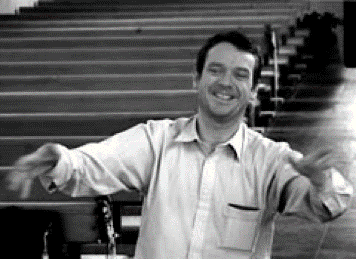An article by Ian de Massini, Director of Music at St Columba’s Church, Cambridge
Soon after my appointment as St Columba’s Director of Music, some seven years ago, I was keenly aware that the particular style of worship here was conducive to musical interpolation. With encouragement from our previous minister, Keith Riglin, there was an obvious opportunity to include a short piece of organ music to accompany the change of personnel in the pulpit between readings: the advantage of a church service is that it can offer music the opportunity for it to take on a functional role, one that is not usually available in the context of a concert performance.
For St Columba’s, this took the form of the playing of a short prelude based upon the previously-sung metrical psalm, composed by various musicians found within large 20th – century tomes of liturgical organ music. But it soon became apparent to me that these minor works neither fully exploited the unique tonal palette of our noble organ, nor did they manifest great musical depth. So, as a composer myself, I took it upon myself to study the iconic book of hymn-tune preludes for the complete liturgical year (called The Little Organbook) that the genius composer Johann Sebastian Bach had created for his own use within the ducal court of Weimar between 1708 – 1717. Thus armed with copious musical examples, I set myself to create my own series of newly-composed preludes, each one based upon one of our weekly metrical psalm-tunes. That series is now about to come to an end, with the last of my 150 psalm- preludes due to be premiered later this month during our morning service on July 22nd. The preludes are then due to be published online, with proceeds going towards the upkeep of St Columba’s musical heritage for the long-term future. This set of 150 preludes is dedicated to St Columba’s Church and will be collectively entitled St Columba’s Organbook.
My next project will then be to create a large-scale collection of Offertory organ pieces, composed in free-style and not based on any pre-existent tunes. This is so very exciting that St Columba’s has a remit to commission new music for the worship of Christ on a weekly basis. Only through the steadfast creation of new music will that art-form flourish, but always alongside the great masterpieces of the past, so embellishing our acts of worship with a richness that mirrors the beauty and majesty of our liturgy and of the bible itself. As Bach himself wrote at the end of so many of his religious compositions: Soli Deo Gloria (“To God be glory alone”).
More recently, we in St Columba’s have been offered the wonderful opportunity to allow one of the singers from our resident choir, Cambridge Voices, to come and sing for us once a month, as a way of saying ‘thank you’ to the members of St Columba’s for allowing Cambridge Voices to rehearse in the church on a regular basis. Katy Edgcombe, a mezzo-Soprano, who lives in Coton, not far from Cambridge, has relished these opportunities to sing music in a liturgical context. Her musical passion has always been for the music of Bach, and so we began to present arias from Bach’s 250-odd church cantatas. Bach always labelled his cantatas according to the specific service for which it had been written, such as “For the 3rd Sunday after Epiphany” and “For Christmas Day”.
For several weeks we presented these arias, and much enjoyed the musical fruits thereof! But it soon became increasingly apparent that some of the texts that Bach set to music were at odds with St Columba’s appointed readings for that particular Sunday service. And so, between Katy, me, and our minister, we are currently researching into the correlation between:
- the texts chosen by Bach for his 250 cantatas, and their biblical sources, not only directly from the New Testament but also with reference to allusions to verses from the Old Testament.
- the readings that had been designated by the Lutheran Lectionary for presentation during those services in St Thomas’s Church, Leipzig for which Bach’s cantatas had been written.
- the current lectionary as used by St Columba’s Church today.
The fact that there is no binding cross-connection between the 18th century Lutheran lectionary and ours is most likely because the Lutheran lectionary was an annual one, and spread over several services on each Sunday. Our current lectionary, on the other hand, is triennial, and applies solely to our one Sunday service. It is true to say that for most major feast days such as Christmas, Advent, Ascension, Easter, and Epiphany, the two lectionaries correspond more or less exactly, but for the majority of “ordinary” Sundays this is certainly not the case. Nevertheless, I now have a bible that is marked up in red and green ink, to underline the biblical passages that correspond to our modern lectionary and also to Bach’s cantatas. So, for the first time, we are now able to present Bach’s cantata excerpts directly inspired by the very readings that have been designated for that particular service in St Columba’s: a marriage made in heaven, no less! I will also extend this incorporation of Bach’s cantata arias by arranging many of the other arias, and instrumental cantata-introductions, for solo organ, and use them to embellish our services once a month.
These ongoing projects reflect the tremendous zeal and enthusiasm that the membership of St Columba’s Church has for music, both old and newly- created, which both enhance and embellish our acts of worship. And this is something very special, even for a church in Cambridge: one can but give thanks to God for this unique opportunity to enlarge our prayers and thanksgiving through music.
Ian de Massini


